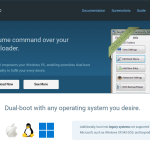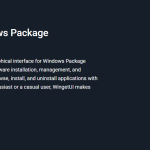In an age where digital data has become the lifeblood of businesses, the need to secure sensitive information is paramount. The consequences of data breaches can range from financial losses and legal repercussions to irreversible damage to a company’s reputation.
It is, therefore, critical that organisations invest in robust data leakage prevention tools, designed to shield against the unauthorised distribution of crucial data.
Understanding Data Leakage Prevention
Data leakage prevention (DLP) is the strategy employed to ensure that sensitive or critical information is not sent outside the corporate network without authorisation. DLP solutions offer comprehensive scrutiny of data in use, data in motion, and data at rest, guarding against both internal and external threats.
The Importance of DLP
Data leaks can originate from numerous sources, such as malicious attacks, negligent employees, or even through sheer accidents. Each scenario can have seriously detrimental impacts on a firm’s competitive edge, customer trust, and compliance status. With increasingly stringent regulations regarding data privacy, organisations cannot afford to be lax when implementing DLP measures.
Key Features of Data Leakage Prevention Tools
Quality DLP solutions should encompass a suite of features that provide a multi-layered defence mechanism. Features typically include content discovery, contextual analysis of transactions, comprehensive monitoring, encryption, and incident response management. Effective tools provide seamless integration with existing systems to monitor, detect, and block sensitive information unlawfully in transit.
Engagement in Proactive Protection
Adopting a proactive approach towards data security is a pillar within DLP. Prevention strategies include thorough training for staff on best practices and the clear delineation of data policies. Encryption protocols, regular audits, and network security assessments are also pivotal in enforcing a robust data protection infrastructure.
Navigating Data Privacy Regulations
One of the prevailing challenges faced by companies today is staying abreast of global data privacy laws, like the GDPR and CCPA. DLP tools are instrumental in ensuring compliance, saving businesses from hefty penalties and legal entanglements.
Responding to Data Breaches
Should a data breach occur, DLP solutions must facilitate prompt detection and reporting. Incident response systems form an integral part of a comprehensive approach, allowing for real-time alerts and automated responses to potential leaks. This immediate reaction capability can minimise potential harm.
The Integration of DLP within IT Infrastructure
Seamless integration with existing IT infrastructure enhances the efficacy of data leakage prevention tools. Integration enables not only the protection of data but also the streamlining of workflow processes, maintaining productivity while buttressing security.
Impact on Workflow and Productivity
The balance between data security and productivity is a delicate one. Advanced DLP tools recognise this balance, providing high-level security without compromising the flow of legitimate data exchange or user productivity.
Choosing the Right DLP Solution
The decision of which DLP solution to choose should be informed by several factors, including the extent of an organisation’s digital assets, the nature of the data to be protected, and the complexity of the operational environment. Consulting with cybersecurity experts can assist in this critical decision.
Case Studies and Success Stories
Reviewing case studies can provide practical insights into how data leakage prevention tools protect various industries. These success stories highlight the tangible benefits of DLP systems, from thwarting cyber espionage to avoiding violations of compliance standards.
The Ongoing Evolution of DLP
As digital threats evolve, so too must the tools we use to combat them. DLP solutions must be adaptable, responding to the ever-changing landscape of cybersecurity threats through continuous updates and refinements.
The Forward Path
As the digital assets of companies continue to grow in both size and significance, investing in advanced data leakage prevention tools must be seen as a priority rather than an option. The right solutions deliver the necessary safeguards to navigate the challenging terrain of data security in the digital age, fostering a secure and prosperous business environment.
Conclusion
With cyber threats on the rise, the imperative of securing digital assets is more pressing than ever. The implementation of data leakage prevention tools underpins the resilience of businesses looking to protect their sensitive data from unauthorised access and distribution.
A comprehensive DLP strategy not only preserves the integrity of digital data but also upholds the trustworthiness and reliability of the enterprises that leverage them. As digital landscapes continue to diversify and data security challenges compound, the role of advanced DLP solutions becomes critical for any forward-looking organisation.
Towards a More Secure Future
To conclude, organisations must acknowledge the significance of DLP solutions in safeguarding their digital future. The investment in state-of-the-art tools and a proactive stance towards cyber threats not only prevents data leakage but also forms the cornerstone of a resilient and trusted enterprise.
The guide to preventing data leakage is ever-evolving, and the emphasis on robust data security practices has never been greater.









